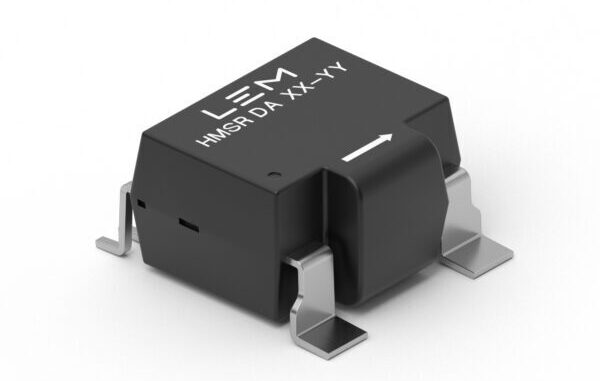Key points:
- New HMSR DA provides significant performance improvement on noise, distortion and interference
- Applications include standalone servo drives, robotics, sewing machines, automated guided vehicles and CNC machine tools
- The first Integrated Current Sensor of its kind with a Sigma Delta bitstream output will help engineers explore new ways of system design
- The new sensor offers resolution of 11 to 13 bits and features a 10MHz clock
LEM (SIX: LEHN) – LEM, a leader in electrical measurement solutions, announced today the launch of HMSR DA, the first Integrated Current Sensor on the market to offer a Sigma Delta bitstream output. The latest model of LEM’s HMSR family, the HMSR DA will be unveiled at the PCIM Europe 2022 power electronics exhibition in Nuremberg, Germany (10-12 May 2022).
Proof that as a specialist in solutions for measuring electrical parameters LEM is a global leader in current sensors technology, the HMSR DA provides significant benefits when used in applications that are prone to noise, distortion and interference. LEM’s new product has been designed to provide a solution to industries requiring clean signals and facing significant problems in case of vibrations, electric noise and electromagnetic noise, for example.
Specific advantages of an Integrated Current Sensor with digital output include superior signal share and reduced noise as well as lower cost and a smaller mechanical footprint. HMSR DA will replace much more complex and costly alternative systems that would traditionally include a shunt resistor, a digital insulator and a power supply circuit. Having all these features incorporated into a single unit makes the HMSR DA a far more attractive option for applications where space is at a premium and minimal cost is essential.
Typical applications for the digital output unit include standalone servo drives, robotics, sewing machines, automated guided vehicles (AGVs), CNC machine tools and a range of other applications that demand high resolution output. The new HMSR DA sensor, which offers resolution of 11 to 13 bits and features a 10MHz clock, is LEM’s first step toward building a digital Integrated Current Sensor roadmap. The forward-thinking company is already working on the next generation of digital Integrated Circuit Sensors which will offer a resolution of 14 to 16 bits and a clock operating above 20MHz.
Analogue versions of LEM’s HMSR range of high insulated Integrated Current Sensors have been in use for many years and have offered power electronics engineers a host of advantages that the new digital model builds on. These include the availability of a small and compact current sensor, strong immunity to stray fields, reinforced isolation and a 300kHz bandwidth. The HMSR family provides a robust, compact and very accurate solution for measuring DC and AC currents in highly demanding switching power applications for the commercial and industrial sectors.
Because the market-leading technology built into the new HMSR DA digital Integrated Circuit Sensor is the first of its kind, it will enable engineers to look at new ways of formulating their system design. The Sigma Delta bitstream output is not only easy to use but is also highly flexible which means customers can apply filters to adapt the sensor to their specific needs.
”Digitalization is the future and we are proud at LEM to be at the forefront of digital Integrated Current Sensor technology. We know that power electronics engineers, who are often faced with challenges such as noise, distortion and interference, will warmly welcome this compact and low-cost alternative compared with solutions that are currently on the market,” said Bastien Musy, VP of Global Product Management for LEM. “Our developers have created an Integrated Current Sensor that takes the sector to a whole new level and they will continue to produce solutions that push the boundaries and deliver in highly demanding applications where competing products in the market traditionally struggle.”















